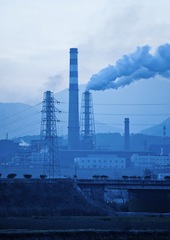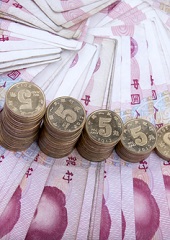Zombies and Glass Houses: Chinese Industrial Subsidies
Is China serious about closing down unsustainable firms?
March 6, 2014

Between 2007 and 2011, we did four sequential industry studies to identify the growth of subsidies to Chinese industry over time.
Usha and George Haley
– Advantages and Disadvantages
– Zombies and Glass Houses
The first one covered the steel industry (2000-2007), the second one the glass industry (2004-2008), the third one the paper industry (2002-2009) and the fourth one was the auto parts industry (2001-2011).
We also analyzed the solar industry and are currently studying the food industry.
In all the industries we studied, China moved from a net importer to one of the largest, if not the largest exporter in the world. In all these capital-intensive industries, labor costs amounted to between 2 and 7 percent, of total costs.
In all these very fragmented industries, the vast majority of Chinese companies enjoyed no economies of scale or scope – which is why subsidies became such a crucial factor.
The major forms of subsidies to Chinese industry that we analyzed included:
a) free to low-cost loans,
b) subsidies to energy (coal, electricity, natural gas, heavy oil), and
c) subsidies to key inputs, land and technology.
We discovered that similar patterns of growth emerged across the industries we studied. Huge Chinese subsidies led to massive excess capacity, increased exports and depressed worldwide prices. This was then followed by a hollowing out of the industrial base of many industrialized countries and a systematic skewing of comparative advantage.
China’s fragmented industries
Take steel. In 2005, China went from a net steel importer to a steel exporter. In 2006, China became the largest steel exporter in the world, up from fifth-largest the year before. In 2007, energy subsidies to Chinese steel were estimated at approximately $15.7 billion – a 3800% increase since 2000.
In 2007, China became the largest producer and consumer of steel in the world, producing about half of world output. With no discernible cost advantage, the Chinese steel industry is also among the most fragmented in the world, with no scale or scope economies. Yet, Chinese steel sells for 25% less than United States and European steel.
From 2000 to mid-year 2007, total energy subsidies to the Chinese steel industry, including for electricity, coal and natural gas, reached $27.11 billion.
The case of paper
Similarly, China’s rapid rise in the global paper industry was fueled by over $33.1 billion in government subsidies, which were provided to firms between 2002 and 2009. Since 2000, in a familiar pattern, China managed to triple its paper production on the back of these massive subsidy flows.
In 2008, China overtook the United States to become the world’s largest producer of paper and paper products. All the while, as was the case with panels in the solar industry, China has the lowest per-capita paper consumption among major trading economies.
As in other industries, China’s paper industry has limited economies of scale or scope and is geographically fragmented, operating in 30 provinces.
China also has among the smallest forest bases in the world measured on a per-capita basis. Consequently, it is the largest importer in the world of major industrial inputs, pulp and recycled paper. These costs for material comprise over 35% of the costs of producing Chinese paper, with labor only 4% of the costs.
Yet, Chinese paper sells at a substantial discount compared to United States or European paper. Subsidies spanned free or discounted electricity, coal, cash grants, loans, free land and saplings, pulp and recycled paper.
Auto path
Chinese subsidies meshed with multinational companies’ strategies to skew trade patterns. For example, from 2001 to 2011, the Chinese auto-parts industry received $27.5 billion in subsidies helping to make it one of the largest producers and exporters in the world.
As a “pillar industry”, auto parts receive strong support from the Chinese government. The industry grew more than 150% since 2004, but remained highly fragmented. It has more than 25,000 registered and unregistered manufacturers.
Drawn in by Chinese subsidies and industrial clusters, United States global auto strategy sought to take advantage of China’s subsidy strategy. U.S. planners chose to center parts manufacturing in China and then to export these parts back home.
Consequently, China’s exports of auto parts to the United States are three times those of its next highest trading destination, Japan.
Specific subsidies included loans and cash grants, reduced prices for coal, electricity, natural gas, glass, cold-rolled steel and technology development For the next decade, the Chinese government has committed an additional $11 billion in subsidies for restructuring and technology-development in auto parts.
As in the glass industry that follows, Chinese subsidies and corresponding expansion of Chinese production capacity correlated more with anticipated exports than with current domestic demand.
China’s glass house
In 2009, with over 31% of global glass production, China was the largest producer of glass and glass products. It also had the greatest number of glass-producing enterprises – and the largest number of float-glass production lines in the world.
China was also the world’s largest consumer of glass. However, because of all the existing and planned production capacity, glass exports from China were expected to outpace projected increases in domestic demand. Since 2003, glass production in China has more than doubled.
Likewise, production capacity in China has also doubled since 2003 – and increased more than threefold since 2000. That happened even though – you guessed it – China’s glass industry enjoys no economies of scale or scope. The industry also displays strong geographic fragmentation, with manufacturers in
29 of the 32 provinces.
To pull off the magic feat yet again, China’s glass and glass- products industry received at least $30.3 billion in subsidies from 2004 to 2008. This includes for heavy oil, coal, electricity, and soda ash and with steady growth reached about 35% of gross industrial output value of glass in 2008.
Saving face
In China, despite Beijing’s statements, little evidence exists of political efforts to shutter inefficient, loss-making companies that sustain local employment.
Instead, considerable evidence exists that local governments have used taxpayers’ money and influence over local banks to avert domestic bond defaults. Consequently, China has never experienced a formal domestic bond default, although the small private solar company Shanghai Chaori Solar appears to be teetering on one currently.
Glaring inefficiencies through misallocated resources have surfaced in China’s solar industry. China’s Ministry of Industry and Information Technology recently admitted that ten of the country’s largest solar companies are carrying $16 billion in debt, mostly as loans from provincial governments and state- owned banks.
In 2014, debts of $7.1 billion will come up for repayment. Several companies already appear bankrupt. For example, China-based but New York-listed Suntech Power, once the world’s largest solar-panel manufacturer, declared bankruptcy in March 2013. It defaulted on convertible bonds of $540 million as foreign sales declined.
Yet, despite bankruptcies and global oversupply of 100%, Chinese solar companies continue to add production capacity in China.
Chinese zombies
Large provincial employers such as Suntech continue to operate in different incarnations. In November 2013, Suntech revealed restructuring plans to emerge from bankruptcy as a solar-panel distributor – rather than a producer.
Wuxi Guolian Development Co Ltd , the Wuxi city government’s investment arm, will invest $150 million to restructure Suntech. Wuxi’s offer preceded the provincially well-connected Shunfeng Photovoltaic International Ltd’s deal of $492 million for Suntech’s bankrupt Chinese unit.
Though the Chinese zombie companies march on, foreign investors suffer. Suntech’s bonds for example now trade at 2/5 cents on the dollar. That is a clear indication that foreign bond holders expect to salvage nothing from Suntech.
China’s President Xi Jinping has issued statements on reinvigorating private enterprise’s role, but whether that extends to foreign companies remains uncertain.
In China, subsidies helped domestic manufacturers achieve formidable market share at home and abroad. This rise in world market status was achieved at the cost of excessive lending by state-owned banks to state-owned enterprises and local governments, resulting in investment and property bubbles.
Meanwhile, as China Inc. ventures abroad, highly subsidized and opaquely managed Chinese companies will impact global stock markets. They will also distort company evaluations, pricing mechanisms and foreign companies’ competitive positions.
Takeaways
With no discernible cost advantage, the Chinese steel industry is among the most fragmented in the world.
Huge Chinese subsidies led to massive excess capacity, increased exports and depressed worldwide prices.
As Chinese zombie companies march on, foreign investors suffer.
Since 2001, subsidies have financed about 20% of production-capacity expansion in China.
China’s success as an exporting nation primarily derives from low labor costs and deliberate currency undervaluation.
Chinese production is highly inefficient: Without subsidies many export-oriented firms would be bankrupt.
China’s central government wants to move the country’s industry to higher value-added production.
In the global economy, uncoordinated Chinese governmental subsidies have led to a new normal of boom-bust cycles.


